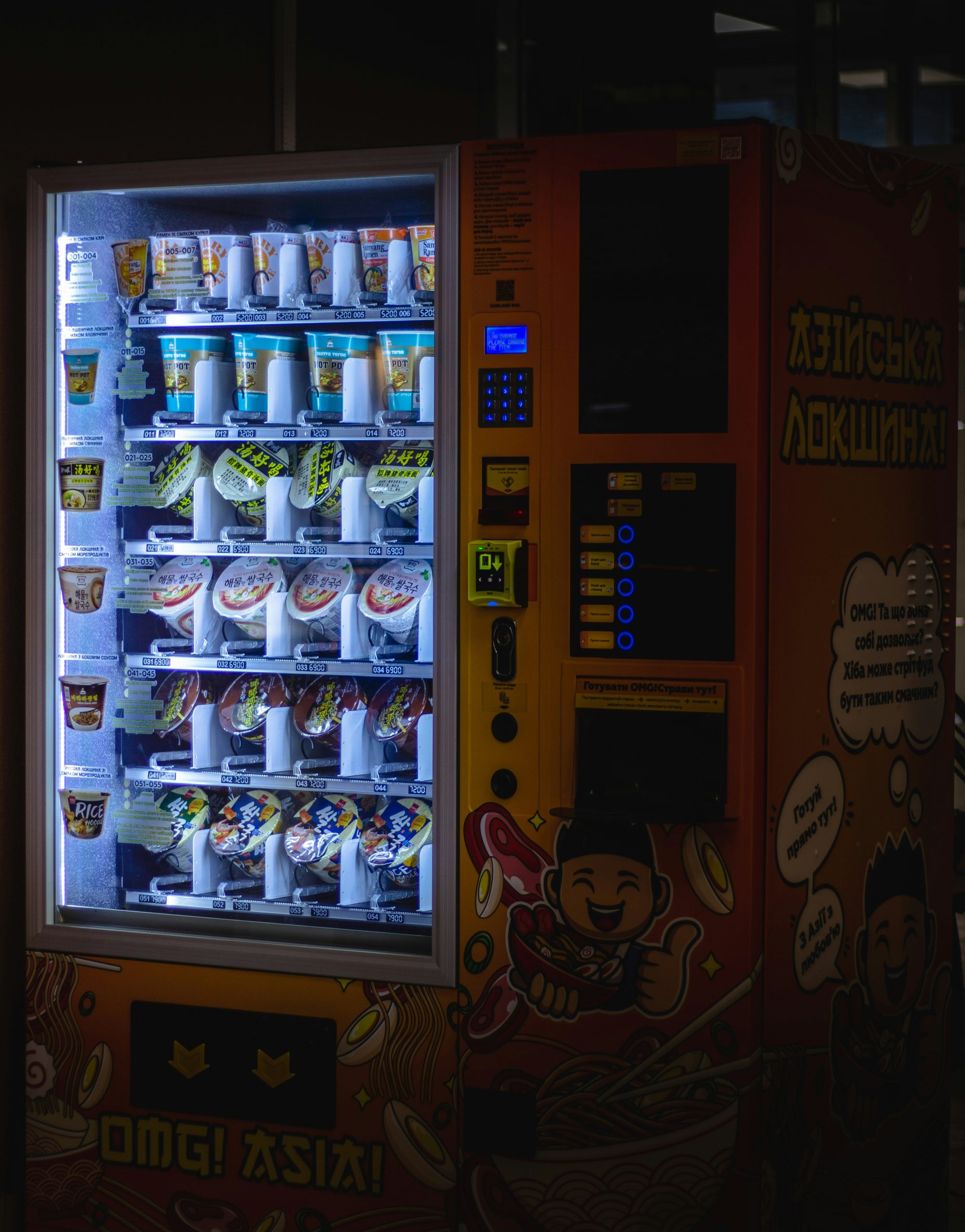
Selling vending machines might seem like a niche area, but in the right hands, it can be a highly lucrative business. With the global vending machine market expected to reach $146 billion by 2027, it’s clear that the demand for quick, automated solutions is growing. From schools and offices to gyms and airports, vending machines are increasingly being recognized as a necessity. However, successfully selling vending machines requires a mix of industry knowledge, fine-tuned sales strategies, and the ability to identify and address the needs of diverse customer segments.
This comprehensive guide provides actionable tips and insights for sales professionals in the vending industry, helping you confidently pitch, negotiate, and close deals.
Who Buys Vending Machines? Know Your Target Market
Before you start pitching a vending machine, it’s essential to understand the key buyer personas. Each customer segment will have different needs, priorities, and pain points. Successful salespeople tailor their pitch for each audience.
1. Business Owners
- Who they are: These are small to medium-sized business owners, including owners of gyms, office spaces, co-working hubs, or community centers.
- What they need: A solution to keep their customers, employees, or tenants happy and enhance convenience. For many, vending machines can also be an added source of income through profit-sharing models.
- Key selling point: Highlight how placing a vending machine can generate passive income while enhancing customer experience. Mention options for customizable products based on their audience.
2. Schools and Universities
- Who they are: Administrators responsible for student welfare and campus operations.
- What they need: Quick, nutritious snack options to support students during busy school days or late-night study sessions.
- Key selling point: Discuss vending machines offering healthy options and how they can be aligned with healthy eating initiatives or comply with school guidelines.
3. Property Management Companies
- Who they are: Managers of commercial or residential properties.
- What they need: Amenities to add value to the property or serve as an additional income source.
- Key selling point: Focus on the convenience vending machines bring to common areas like lobbies and how they help boost tenant retention rates.
4. Healthcare Facilities
- Who they are: Hospitals, clinics, and care facilities looking to serve patients, visitors, and staff.
- What they need: A range of options, from beverages and snacks to PPE supplies (like masks and gloves).
- Key selling point: Discuss how vending machines can cater to 24/7 demand in healthcare settings and improve overall patient/staff satisfaction.
By understanding these customers’ precise needs and motivators, you’ll craft a much stronger sales pitch.
5 Steps to Selling Vending Machines Successfully
Step 1. Highlight the Revenue Potential
Most businesses buy vending machines because of the potential for passive income. Showcase how they can generate profits with minimal effort. Provide data on average monthly earnings, profit-sharing models, and maintenance expenses, so they have clarity on ROI.
For instance:
- Example: “Our clients typically earn between $300 and $500 per month per machine, depending on location and foot traffic. With a startup cost of $X, you’d break even within Y months.”
Step 2. Customize the Product Offering
Offering flexibility in product selection can make your pitch highly appealing. Tailor the vending machine’s product lineup to match the audience’s preferences.
- Example: A property manager serving tech industry offices may want vending machines filled with energy drinks and protein bars, while a school may prioritize juice packs, granola bars, or fruit cups.
Providing options for healthy snacks, eco-friendly packaging, or even technology like cashless payment systems will elevate the customer experience.
Step 3. Demonstrate the Tech Advantage
Modern vending machines are far more than snack dispensers; they’re equipped with advanced technology that increases convenience and maximizes sales.
Key features to highlight:
- Cashless payment systems (credit cards, mobile payments, etc.)
- Real-time inventory management through IoT
- Touchscreen interfaces for better customer engagement
- Energy-efficient technology, which decreases running costs by up to 30%
These features not only cater to tech-savvy customers but also make owning a vending machine simpler and more profitable for buyers.
Step 4. Provide Location Guidance
The location of a vending machine can be one of the biggest determinants of its profitability. Use your industry knowledge to recommend high-traffic or underserved areas, such as entrances, break rooms, lounges, or other strategic points.
- Example Pitch Point: “Placing your vending machine near a university library where students pull late-night study sessions could generate 20% higher profits than other campus locations.”
You can even share success stories or provide case studies to back up your expertise in location strategy.
Step 5. Address Objections Before They Arise
During the sales process, you may encounter common objections like:
- “What if the machine breaks down?”
- Respond with a maintenance guarantee or regular servicing plan.
- “This seems like a lot of upfront cost.”
- Break down the financials and emphasize ROI over time.
- “Do we need approval for placement?”
- Offer to guide them through the process of obtaining permits or permissions if necessary.
By anticipating these sell vending machine concerns, you’ll build trust and position yourself as a solution-oriented salesperson.
Expert Tips to Close the Deal
1. Leverage Social Proof
Share customer testimonials, case studies, or performance data to establish credibility. For example:
- “One of our machines at a local gym generated $X in the first three months, even during the off-season.”
2. Offer Flexible Pricing
If possible, provide various pricing models, such as outright purchase, leasing, or profit-sharing. Flexible options make entry more accessible for customers on a budget.
3. Present a Value-Add
Stand out from competitors by offering additional perks, such as:
- Free delivery and installation
- Training on how to monitor inventory
- Regular servicing for a specified period
The more value you offer, the harder it’ll be for potential customers to say no.
4. Master the Art of Follow-Up
Closing a deal can sometimes require several touchpoints. After your initial pitch, send a follow-up email outlining the key benefits and asking if they need further information. Persistence (within reason) often pays off in sales.
Building Long-Term Relationships
Selling doesn’t end after the deal is closed. Paying attention to post-sales relationships and support can lay the foundation for repeat business or referrals. Some strategies include:
- Providing ongoing maintenance or customer support.
- Offering loyalty programs for repeat orders.
- Keeping customers informed about new product offerings or technologies.
By building a trusted relationship, you’ll establish yourself as a go-to expert in the vending machine industry.
Transform Your Vending Sales Strategy Today
The vending machine industry represents an untapped opportunity for ambitious sales professionals. Whether you’re just starting or looking to refine your sales strategy, using these techniques will help you build stronger connections with potential buyers and close more deals.
Remember, success in sales depends on understanding your customers’ needs and clearly showing how your product solves their problems. Get these ingredients right, and you’re on your way to a profitable venture.
Looking for more actionable tips on acing your next sales pitch? Stay tuned to our blog for all things sales, strategy, and beyond!
Related Blog



